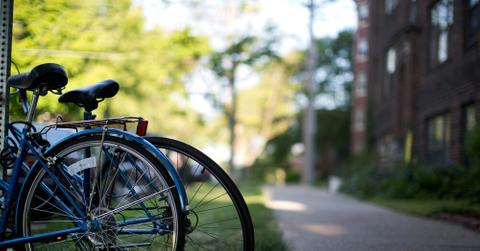Pro Tips to Maintain Your Sidewalk and Prevent Future Violations

July 28 2025, Published 2:49 a.m. ET
Sidewalks are more than a concrete path; they are essential for public mobility, neighborhood appeal, and property value. Yet for many property owners, these surfaces are an afterthought until a violation notice arrives from the city. Maintaining your sidewalk isn't just a matter of aesthetics—it's a civic responsibility that, when neglected, can lead to legal and financial consequences. Fortunately, with regular attention and a bit of preventative care, you can keep your walkway safe, compliant, and in excellent shape for years to come. Whether you are dealing with aging pavement or simply want to stay ahead of potential issues, these sidewalk maintenance strategies will help you protect your property and avoid violations before they happen.
Understand Local Sidewalk Maintenance Laws
The first step in proactive sidewalk care is understanding who is responsible for maintenance in your area. In many cities, including places like New York and Los Angeles, sidewalk maintenance is the legal responsibility of the adjacent property owner. This includes repairing cracks, replacing uneven panels, and removing snow or debris. Familiarizing yourself with local codes and standards can help you anticipate the expectations placed upon you and avoid fines. Keep in mind that rules vary not only by city but sometimes by zoning district or type of property, so checking with your local Department of Public Works or NYC DOT sidewalk violation status can clarify your obligations.
Conduct Routine Inspections Throughout the Year
To catch small problems before they escalate, routine inspections are key. Set a quarterly schedule to walk your property and observe the sidewalk closely. Look for cracks, heaving slabs, signs of water pooling, and areas where the surface feels loose or unstable underfoot. Take note of areas near trees, driveways, and heavy foot traffic, as these are common hotspots for wear and damage. Document your findings and note any changes over time—this can help you monitor progression and determine when intervention is needed.
Control Vegetation and Tree Roots
Trees can both beautify and sabotage your sidewalk. Over time, expanding root systems can push up concrete panels, creating dangerous trip hazards. If you have trees on or near your property, it's wise to select species known for non-invasive root systems or to plant trees a safe distance from sidewalks. For existing trees, installing root barriers can redirect growth away from concrete surfaces without harming the tree. Regular pruning also ensures that branches or vines don’t encroach upon the walkway. If the tree is city-owned, contact the municipal arborist or forestry department before cutting roots or undertaking any work that could affect public trees, as doing so improperly may result in additional violations.
Address Drainage Issues Promptly
Water is one of the most destructive forces on concrete. Poor drainage can cause water to pool on sidewalks, erode the subgrade, and lead to sinking or cracking. If you notice standing water after a storm, investigate the source. It could be due to improperly sloped slabs, clogged gutters, or nearby landscape runoff. Addressing drainage problems quickly can prevent long-term structural damage and help avoid hazards such as algae buildup or winter ice. Solutions may include regrading the surrounding soil, installing French drains, or adjusting downspout locations to steer water away from the pavement.
Keep the Surface Clean and Clear
Clean sidewalks not only look better—they perform better, too. Debris, leaves, and snow can cause slips and accelerate surface degradation. Sweep your sidewalk regularly and remove ice or snow promptly after storms, especially in regions where local laws require snow clearance within a designated number of hours. Use deicers that are safe for concrete to avoid chemical damage and steer clear of metal tools that might chip or gouge the surface. During warmer months, a light power washing can remove embedded dirt and organic material that might attract weeds or mold.
Repair Damage as Soon as It Appears
The longer you wait to fix sidewalk damage, the worse and more costly it becomes. What begins as a hairline crack can allow water intrusion, leading to expansion during freezing temperatures or softening in heat. Patching small cracks or applying a sealing coat early can delay more invasive repairs. For uneven panels or severe cracking, consider hiring a professional to lift, grind, or replace the slab. Many municipalities allow or even require contractors to be bonded and registered with the city, which ensures the work will meet compliance standards. Be sure to obtain any necessary permits and follow official guidelines to prevent delays or fines.
Document Work and Stay Inspection-Ready
Good recordkeeping can be a lifesaver when dealing with city inspectors or future buyers. Keep receipts, permits, photographs, and contractor warranties in a dedicated folder. If a violation notice is ever issued, this documentation can help prove due diligence, potentially leading to a reduced penalty or extended repair window. Staying prepared also means being aware of upcoming city inspections or sidewalk audits and ensuring that your walkway presents well during those visits.

Invest in Preventative Materials and Features
Modern advancements in paving technology have opened the door to more durable and resilient sidewalk materials. If replacement becomes necessary, ask your contractor about reinforced concrete, fiber mesh additives, or other techniques that improve longevity. You may also consider decorative scoring or surface texturing that enhances traction while minimizing visual wear over time. In high-traffic or exposed areas, sealing your concrete can add a protective layer against moisture, salt, and environmental staining.
Conclusion
Maintaining your sidewalk is a continual process, not a one-time fix. By adopting a proactive mindset and attending to your walkway with the same attention you give the rest of your property, you can prevent accidents, preserve curb appeal, and avoid the disruptions of a city-issued violation notice. With regular inspections, quick repairs, and thoughtful care, your sidewalk will remain a safe and inviting path for neighbors, guests, and passersby alike. The effort you put in now paves the way—quite literally—for years of smooth, worry-free service. Whether you're a homeowner looking to resolve a DOT violation or a contractor seeking expert insight, Nycsidewalkviolations.com is your one-stop solution for sidewalk compliance in New York City.


